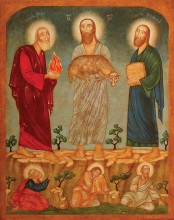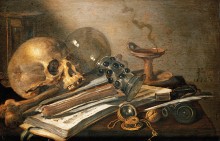Transfiguration by Julia Stankova
Julia Stankova began her painting career in Sofia, Bulgaria, restoring icons. Inspired by the symbolic meaning of the images, she began painting her own works. Her personal engagement with her paintings was formed, she says, when she started reading the New Testament. “I took my place in the queue behind the apostles waiting for Christ to wash my feet too.” In Transfiguration, Stankova brings her own devotion, imagination, and theology to the iconic tradition.



